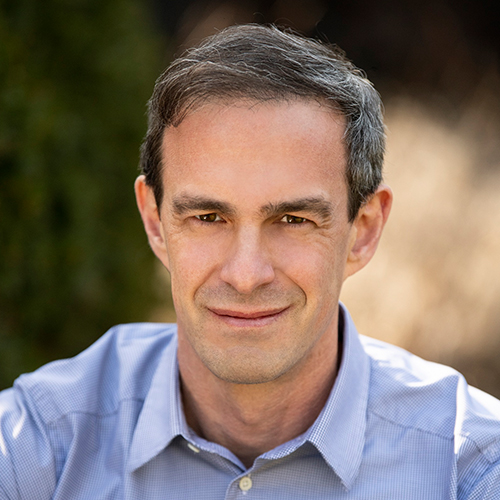
Canada has set a goal of welcoming 500,000 immigrants to the country in 2025. This represents a 25 per cent increase over 2021 and a much larger increase compared to 2018, 2019 and 2020. Processing times, however, take years. The Canadian start-up visa has a 32-month wait period. Family sponsorship for a spouse living outside the country can take 18 months. For parents or grandparents, it is 38 months. Expanding immigration rapidly might overburden the public service officers tasked with processing these applications efficiently and effectively.
Canada has been experimenting with using machine learning, a branch of artificial intelligence (AI), to support decision-making in the immigration, border control and refugee systems. For example, an automated tool sorts visitor record applications into routine and non-routine categories before human review. For non-routine cases, the tool makes clerical tasks easier by filling in information on forms and sorting applications. The government notes: “The expected results are quicker decisions for clients and faster processing times overall for visitor record applications.”
The public discussion of the impact of the use of AI tools in immigration has largely focused on how AI might make aspects of existing workflows for immigration officers more efficient. But as Petra Molnar argued in 2018 in Policy Options: “The use of AI can lead to serious breaches of internationally and domestically protected human rights, in the form of bias or discrimination; privacy violations; and issues with due process and procedural fairness, such as the right to have a fair and impartial decision-maker and being able to appeal the decision.”
These worries are real. If AI is simply dropped into workflows, all the biases and challenges of the current system will be reflected in the AI. Today’s AI is prediction technology. It takes information or data provided by human engineers and managers, and uses that to fill in missing information. If past human decisions have bias, the AI will reflect that bias. There is a better approach that Canada should adopt: If used properly, AI could enable an entirely new type of system that reduces bias and processes applicants more effectively and more fairly.
The current approach based on biased systems may not give much benefit at all. If the AI is simply automating the prediction tasks within a public servant’s workflow, the most it can do is incrementally speed up that public servant’s work.
If AI provides little more than an incremental benefit, while reflecting and perhaps exacerbating human bias, why all the excitement?
In our new book, Power and Prediction, we argue that AI’s potential will be unlocked when we move to systems solutions. Most AI implementation so far has been point solutions, where people unpack an existing workflow, identify prediction tasks that an AI can do better than a human, take out the human, drop in the AI and change little else. When that happens, the upside is limited. Point solutions are necessarily incremental. They don’t fix the broader problems.
The history of electricity demonstrates the difference between point solutions and system solutions. It was clear in the 1880s that electricity was going to change the way we live and the way we work. But it wasn’t until the 1920s that half of U.S. households and U.S. factories were electrified. It took 40 years for most people and companies to experience the benefit of electricity.
At first, companies applied electricity within their existing workflows. Factories were organized around the power source. For example, in a steam-powered factory, because energy dissipates with distance from the power source, the most power-hungry machines were located as close as possible to the source. Factories were built on multiple storeys to ensure that more machines could be near the steam engine. When electric motors came along, the steam engine was swapped out for an electric motor and nothing else changed. Factories saved a little on their energy costs, but the results were underwhelming.
By the early 1900s, it started to become clear that electricity enabled a new kind of factory where the workflow was no longer determined by proximity to the power source. Distributed power meant that the logic of the production process could determine the workflow, with inputs coming in at one end and finished products out the other. Electricity enabled a new type of factory. Once that occurred, the returns from electrification were much higher and thus electricity was widely adopted.
The same thing applies to our current immigration problems. AI could enable a new type of system – one that enables our country to increase immigration to the desired levels without the multi-year backlogs we currently experience.
The precise form that this system might take is not known. But we know enough about AI used to assist in decision-making that it is time to start experimenting with novel systems that use AI to enable immigration decisions that are faster and less biased relative to the current system.
Governments’ use of AI in immigration and refugee system needs oversight
How the government used the pandemic to sharply increase immigration
From that point onward, we can start to see AI’s potential and start asking different questions. Currently, about 95 per cent of applicants for family or economic class visas are approved. Perhaps the country can grant temporary visas quickly, then devote more time to applicants who require a longer assessment. Indeed, we may find that with the help of AI, decision-makers in the public service could accelerate the path to permanent residency for most applicants.
We don’t know exactly what the new AI-enabled immigration system will look like. We know it will involve better prediction that enables a new way of delivering on the organization’s mission. The first part of Immigration, Refugees and Citizenship Canada’s mission is to develop and implement “policies, programs and services that facilitate the arrival of people and their integration into Canada in a way that maximizes their contribution to the country while protecting the health, safety and security of Canadians.”
The process thrives on a system that is open, friendly, transparent and promotes the Canadian brand of inclusiveness. With a redesigned workflow that hands some of the load to an appropriately trained AI, all these ends could be achieved.














